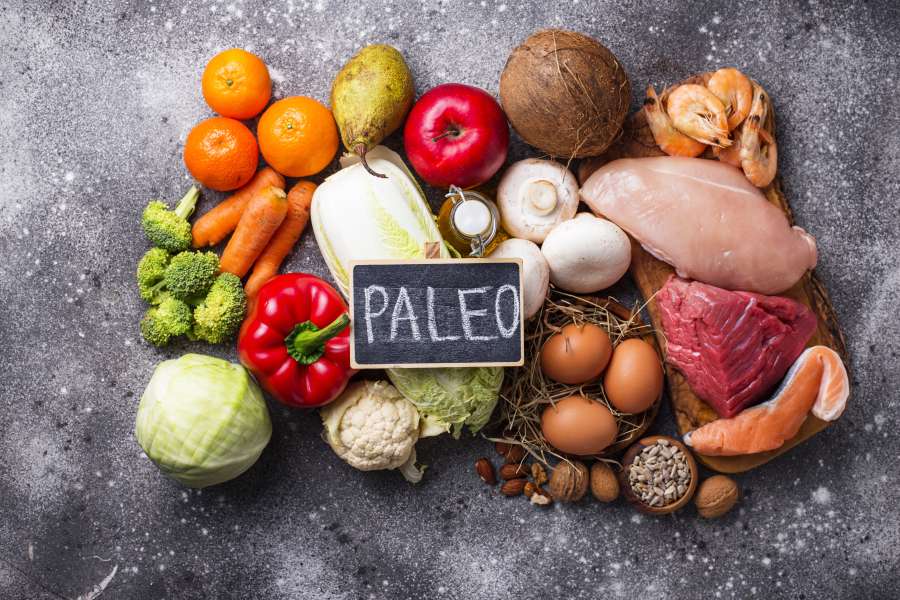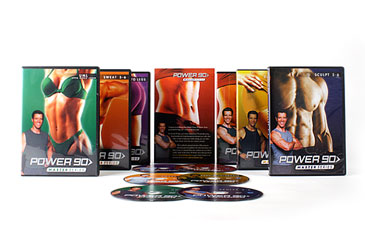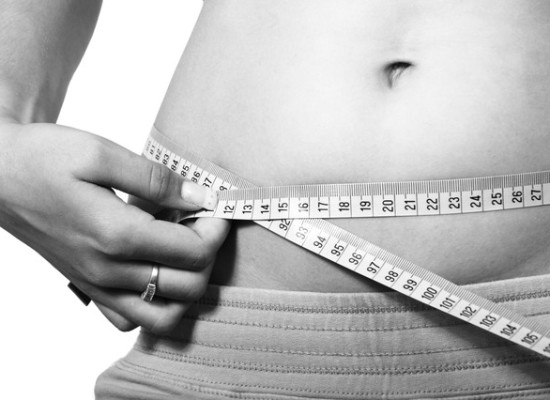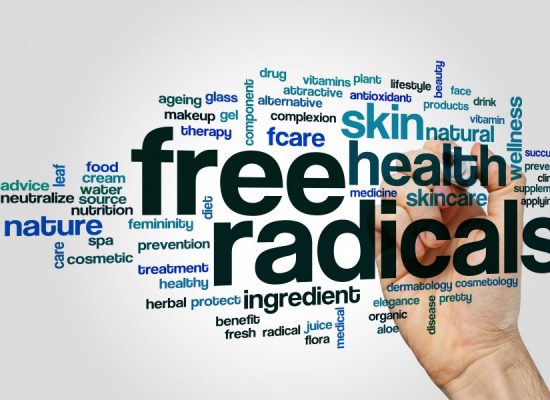

Paleo vs Atkins Diet
I’ve personally watched at least 40 people make dramatic body transformations by following a paleo plan and incorporating one or more of the Beachbody programs. It works—with some modification. Before you jump in, it’s important to understand what eating paleo is all about, the key concepts behind it, and compare paleo vs Atkins so you can fit the best plan for YOU.
First, let me say that if you’re a vegetarian/vegan, then this is probably not the best resource for you. It’s heavy on the meat and lighter on the vegetables.
What is the Paleo Diet?
I’ve learned the most about the paleo diet from Mark Sisson in his book, The Primal Blueprint and his blog, The Daily Apple, so the info in this post will be slanted in his direction.
In short, it’s based on eating as our ancestors did—primarily whole foods. Mark’s four main foundations are:
- 80% of your body composition will be determined by your diet
- Lean Body Mass (LBM) is the key to life
- Excess body fat is bad
- Excess insulin is bad
Key Paleo Concepts
Carbohydrates. The paleo diet limits carbs and has you get them from fruits and vegetables. I cover that in detail in this blog—P90X Carbohydrates List: Where to Get Your Carbs
Here’s a video where I share my thoughts on the paleo diet and carbs:
Blood Sugar & Insulin. Carbohydrates are essential sugars, so when you take in carbs, your blood sugar rises. The basic measurement of how fast it rises is referred to as the glycemic index of a food. It’s basically a measurement of how dramatically and how fast a food is going to cause your blood sugar to rise.
High blood sugar is a toxic condition, so the body responds by generating insulin. If it didn’t, you’d die. Insulin gets a bad rap, but it is an essential hormone whose job is to convert glucose (carbs) into glycogen and store that glycogen in your muscles and liver.
Glycogen is your first line of energy when exercising, so it is easy to see how to fuel your body for exercise or to recover from hard efforts. Ingest some carbs and raise blood sugar and allow insulin to do it’s job.
Now, this is all a nice neat and very efficient system—until we start to give the body more carbs than it can handle. The muscles in the liver have limited storage capacity. Once they are full, the only place the body can stash these converted sugars is in the fat cells.
Here’s a short video that illustrates what happens when the body’s insulin response is overstimulated. Eventually, the body can’t keep up and the result is Type 2 Diabetes. Excess insulin production has a number of tragic and unnecessary side effects.
Here’s a quote from Mark on this topic:
“High insulin levels wreak havoc in many ways. Cholesterol and triglycerides become oxidized and inflamed, initiating the process of atherosclerosis, or hardening of the arteries. Appetite hormones get thrown out of whack, causing you to continue eating when you should feel satiated. Fat cells stay sensitive well after muscles cells have become resistant, so the excess sugar and other calories wind up as stored body fat. Melatonin/serotonin cycles get messed up, making you feel groggy and cranky in the morning, and craving sugar in the evenings. Becoming insulin-resistant can directly lead to metabolic syndrome and Type 2 diabetes.” (From Mark Sisson’s 21 Day Total Body Transformation).
So, now that we understand how insulin works and what it does, we can see that the goal should be to keep your blood sugars under control in order to avoid insulin production. You can do this by eating foods with a low glycemic index, so focus on that.
Paleo vs Atkins
In theory, the Atkins diet isn’t really that different than the paleo plan. However, if you look closely, you’ll find that they’re really pretty different.
One difference is that the paleo diet doesn’t have any “phases” and Atkins has four. You start with the strictest (Phase 1: Induction) and gradually progress to the least restrictive (Phase 4: Lifetime Maintenance).
When it comes to carbohydrates, paleo has you eating a small to moderate amount depending on your goal or any modifications (see below) and Atkins ranges from low (Phase 1) to moderate (Phase 4).
Both have moderate intake of protein.
Paleo has moderate to high intake of fat, while Atkins is high. The types of recommended fats are also different. The paleo diet suggests saturated fats like olive and coconut oils, nuts and seeds and grass fed butter; veggie oils (canola, safflower, grapeseed, sunflower, and soybean) are a no no. On the other hand, the Atkins diet gives the thumbs up to butter and vegetable oils.
Dairy is pretty much a no go on the paleo diet; Atkins allows cheese in Phase 1 and cream in Phase 2.
The paleo diet doesn’t allow grains, bread and legumes and Atkins approves them in Phases 3 and 4.
Both diets discourage sugar, but Atkins allows the artificial sweetener Splenda and diet sodas. (No bueno in my book—click on those links to learn why!)
One of my biggest beefs with Atkins is that it doesn’t really put any emphasis on the quality of the foods you eat. (It’s low carb snack bars are a good example of that.) The paleo diet encourages eating high quality nutritious foods—organic vegetables, grass fed/hormone-free beef, locally grown foods, etc.
One of the side effects of eating low quality food is that you disrupt the balance between Omega 3’s and Omega 6’s in your body.
People often overlook the importance of Omega 3 fatty acids. There are a lot of good reasons to take Omega 3’s with brain and heart health at the top of the list.
Omega 6’s are found in most vegetable oils, most fake butter substitutes, beef that comes from grain-fed cattle, and in a whole host of other processed foods.
The most notable side effect of this imbalance is inflammation. I used to suffer from inflammation on an uncontrollable level. I had to stop playing basketball because I could not get through it without an hour of ice and 1,000 mg of Advil. Once I started eating high quality foods, and taking an Omega 3 supplement, that all stopped.
The Paleo Diet & P90X or Insanity
The bottom line—if you’re active, you need carbs.
In The Primal Blueprint, Mark has formulated an exercise regime that requires very little carbohydrate intake. It has relatively little high intensity cardio, so it doesn’t require as much in the way of carb intake for glycogen production.
If you’re like me and you regularly do programs like P90X and Insanity, then you need carbs to give you energy and help your body recover. I have to modify the paleo and primal plans to fit my life. But, there’s a right way and a wrong way to modify.
It’s very easy for athletes especially to fall into the trap of consuming massive amounts of carbs simply because they can. I’ve done that. But, I learned from Mark not to go crazy with them and make sure I eat the right kind.
I can get all the carbs I need from fruits and vegetables. Fruits are higher on the glycemic index, so I’ll limit my intake of fruit and try to eat “nature’s candy” primarily before and after working out. That way, I get the benefit of that higher glycemic index carbs at a time when they are absorbed and converted into glycogen at a faster rate.
Throughout the day, I eat vegetables, which contain carbohydrates and lots of micronutrients (minerals and vitamins). I don’t need grains to support my chosen fitness program. I can get everything I need from fruits and vegetables and leave all that processed crap that comes in boxes and bags behind.
When I talk to people that are new to the paleo plan, they often complain that they don’t have much energy or that they don’t feel all that great. If they are doing something like P90X or Insanity, they get extremely sore. The culprit is usually a lack of vegetables. When those people start to add vegetables to their diet, they start to feel better, they have more energy for their workouts, and they recover faster.
Everyone has to take concepts and find a way to make them work for their body. The more active you want to be, the more carbs you need. This process involves a lot of trial and error, but I highly encourage you to find what works for you.
A Recap of What’s Important
There are a few important takeaways here:
First, focus on eating low glycemic index foods to keep your blood sugars under control and limit insulin production.
Second, understand that you do need carbs if you’re working out, but you can get all you need from fruits and vegetables. Use higher index fruits pre- and post-workout.
Third, eat high quality foods.
Fourth, take an Omega 3 supplement to offset that Omega 6 imbalance.
Like many things in life, simple is not always easy at first. Don’t be too hard on yourself. A sandwich is not going to kill you. If you have one, don’t beat yourself up. Just understand what’s happening with your body.
When you change your eating habits, you can turn your body from a sugar burning machine to a fat burning machine. The machine works on either fuel, but the results are dramatically different.
I hope the information I covered here, including a comparison of Paleo vs Atkins, was helpful. I’m always here to help you in any way I can…for FREE.



